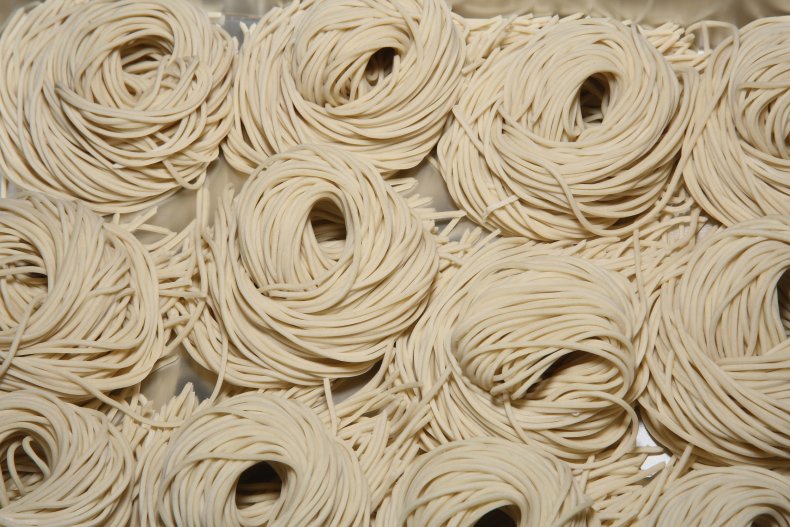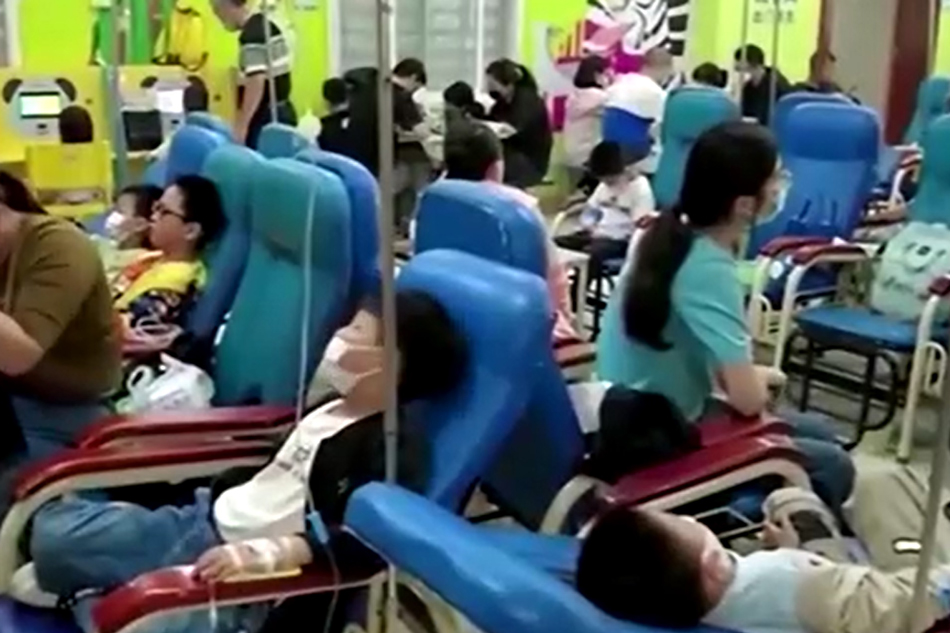Ramen Illness Outbreak: Understanding The Causes, Symptoms, And Preventive Measures
Ramen illness outbreak has become a growing concern worldwide, as reports of foodborne illnesses linked to ramen consumption continue to surface. This issue is not only alarming for ramen enthusiasts but also raises significant questions about food safety standards in the industry. As the popularity of ramen continues to soar, understanding the underlying causes of these outbreaks becomes crucial.
The ramen industry has grown exponentially over the years, with millions of servings consumed daily across the globe. However, with this popularity comes the responsibility to ensure that the food served is safe for consumption. Recent reports of illnesses linked to ramen have sparked discussions about hygiene practices, ingredient sourcing, and manufacturing processes.
In this article, we will delve into the causes of ramen illness outbreaks, explore the symptoms associated with these cases, and discuss preventive measures that can help mitigate such incidents. By understanding the factors contributing to these outbreaks, consumers and industry players can work together to ensure the safety of one of the world's most beloved dishes.
Read also:Sunnydale Massacre Is It True Unveiling The Truth Behind The Controversy
Table of Contents
- Introduction to Ramen Illness Outbreak
- Causes of Ramen Illness Outbreak
- Symptoms of Ramen-Related Illnesses
- Statistics and Data on Ramen Illness Cases
- Ramen Manufacturing and Safety Standards
- Preventive Measures for Ramen Consumers
- Food Safety Regulations for Ramen Producers
- Case Studies of Ramen Illness Outbreaks
- Food Testing and Quality Assurance
- Future of Ramen Safety and Innovation
Introduction to Ramen Illness Outbreak
Understanding the Phenomenon
Ramen illness outbreak refers to incidents where individuals fall ill after consuming ramen that has been contaminated with harmful pathogens or substances. These outbreaks can occur due to a variety of factors, including improper food handling, inadequate storage conditions, and contamination during production. As ramen becomes increasingly popular, the risk of such outbreaks also rises, making it essential to address these issues proactively.
The global ramen market is projected to reach $17.5 billion by 2028, according to a report by Grand View Research. With such a massive market, ensuring food safety is not only a moral obligation but also a legal requirement. Consumers trust that the ramen they consume is safe, and any breach of this trust can have severe consequences for both individuals and the industry as a whole.
Causes of Ramen Illness Outbreak
Contamination During Production
One of the primary causes of ramen illness outbreaks is contamination during the production process. This can occur at various stages, from ingredient sourcing to packaging. For instance, if the wheat used to make noodles is contaminated with harmful bacteria, it can lead to widespread illness. Similarly, if the broth is not properly pasteurized, it can harbor pathogens that cause foodborne diseases.
- Improper handling of raw materials
- Inadequate sanitation in production facilities
- Use of low-quality ingredients
Storage and Distribution Issues
Another significant factor contributing to ramen illness outbreaks is improper storage and distribution. Ramen, especially instant varieties, requires specific conditions to maintain its quality and safety. If these conditions are not met, the product can become a breeding ground for harmful bacteria. For example, if ramen is stored at temperatures that are too high or for too long, it can lead to spoilage and contamination.
Symptoms of Ramen-Related Illnesses
Common Symptoms
The symptoms of ramen-related illnesses can vary depending on the type of contamination and the individual's sensitivity. However, some common symptoms include nausea, vomiting, diarrhea, abdominal cramps, and fever. In severe cases, these symptoms can lead to dehydration, electrolyte imbalances, and even hospitalization.
- Nausea and vomiting
- Diarrhea
- Abdominal pain
- Fever and chills
Statistics and Data on Ramen Illness Cases
Global Trends
Data from the World Health Organization (WHO) indicates that foodborne illnesses affect approximately 600 million people globally each year. While specific statistics on ramen-related illnesses are limited, reports from various countries suggest that the issue is becoming more prevalent. For instance, a 2022 outbreak in Japan affected over 500 people, highlighting the need for stricter food safety measures.
Read also:Unlock The Secrets Of The 7 Moverules A Comprehensive Guide
According to the Centers for Disease Control and Prevention (CDC), foodborne illnesses cost the United States alone an estimated $15.6 billion annually. While ramen may not be the primary contributor to these costs, its growing popularity makes it a significant area of concern.
Ramen Manufacturing and Safety Standards
Industry Practices
Ramen manufacturing involves several stages, each of which must adhere to strict safety standards. From sourcing high-quality ingredients to implementing proper hygiene practices, manufacturers play a crucial role in ensuring the safety of their products. However, not all manufacturers follow these guidelines, leading to potential contamination risks.
Regulatory bodies such as the Food and Drug Administration (FDA) and the European Food Safety Authority (EFSA) have established guidelines for food production, including ramen. These guidelines cover everything from ingredient sourcing to packaging and labeling, ensuring that consumers are informed about the contents of their food.
Preventive Measures for Ramen Consumers
Tips for Safe Consumption
Consumers can take several steps to reduce their risk of falling ill from ramen consumption. These include checking the expiration date, storing the product in appropriate conditions, and following cooking instructions carefully. Additionally, consumers should be aware of any recalls or warnings issued by regulatory bodies.
- Check the expiration date before purchase
- Store ramen in a cool, dry place
- Follow cooking instructions carefully
Food Safety Regulations for Ramen Producers
Legal Requirements
Ramen producers are subject to various food safety regulations, depending on their location. In the United States, for example, the FDA requires manufacturers to comply with the Food Safety Modernization Act (FSMA), which focuses on preventing foodborne illnesses. Similarly, the European Union has stringent regulations governing food production, including the requirement for hazard analysis and critical control points (HACCP).
These regulations aim to ensure that all food products, including ramen, are safe for consumption. By adhering to these guidelines, manufacturers can minimize the risk of contamination and protect consumers from illness.
Case Studies of Ramen Illness Outbreaks
Notable Incidents
Several notable ramen illness outbreaks have occurred in recent years, highlighting the importance of food safety. For example, a 2019 outbreak in South Korea affected over 200 people, leading to a recall of several popular ramen brands. Similarly, a 2021 outbreak in the United States resulted in multiple hospitalizations, prompting an investigation by the CDC.
These incidents serve as a reminder of the potential dangers associated with ramen consumption and the need for vigilance in both production and consumption practices.
Food Testing and Quality Assurance
Importance of Testing
Regular food testing is essential for ensuring the safety of ramen products. Manufacturers should conduct tests for pathogens such as Salmonella, E. coli, and Listeria, as well as for chemical contaminants such as pesticides and heavy metals. Additionally, quality assurance programs should be implemented to monitor production processes and identify potential risks.
Third-party testing laboratories can play a crucial role in this process, providing unbiased assessments of food safety. By partnering with these laboratories, manufacturers can ensure that their products meet the highest standards of quality and safety.
Future of Ramen Safety and Innovation
Technological Advancements
The future of ramen safety lies in technological advancements that can enhance food production and testing processes. For example, blockchain technology can be used to track the entire supply chain, ensuring transparency and accountability. Additionally, advancements in food testing methods, such as rapid pathogen detection, can help identify contamination risks more quickly and effectively.
Innovation in packaging materials, such as vacuum-sealed bags and temperature-sensitive labels, can also contribute to the safety of ramen products. By embracing these technologies, the ramen industry can continue to grow while maintaining the trust of consumers.
Kesimpulan
Ramen illness outbreak is a serious issue that requires attention from both consumers and industry players. By understanding the causes of these outbreaks, recognizing the symptoms, and implementing preventive measures, we can work towards ensuring the safety of one of the world's most beloved dishes. It is crucial for manufacturers to adhere to food safety regulations and for consumers to practice safe consumption habits.
We invite you to share your thoughts on this topic in the comments below. Additionally, feel free to explore other articles on our website for more information on food safety and related topics. Together, we can create a safer and healthier future for all.
Article Recommendations


